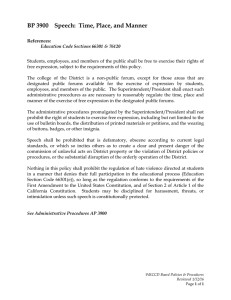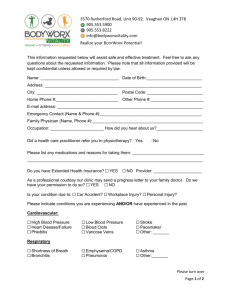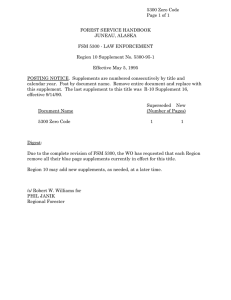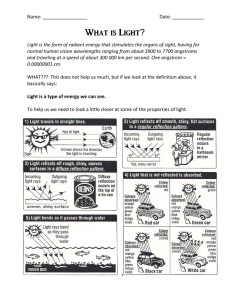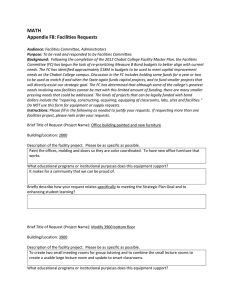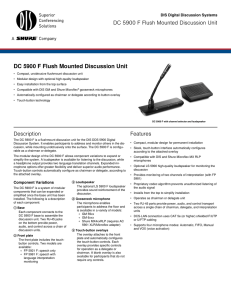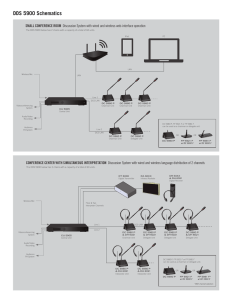Example of multiple linear regression, and exercises due 11-12-07.
advertisement
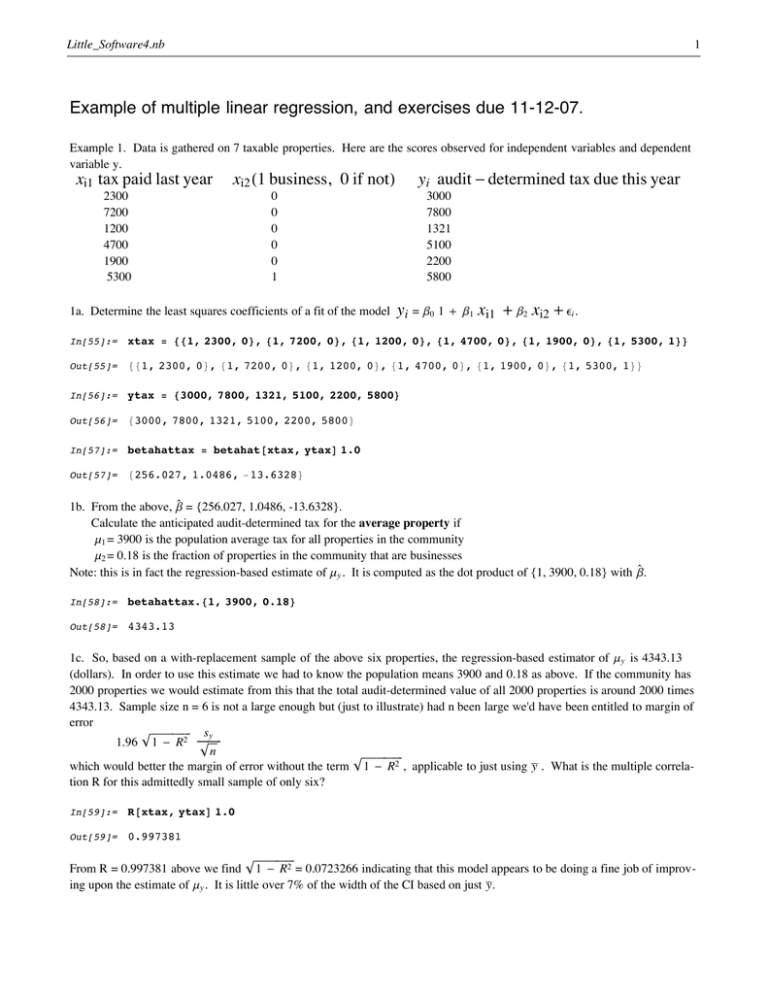
Little_Software4.nb
1
Example of multiple linear regression, and exercises due 11-12-07.
xi2 H1 business, 0 if notL
Example 1. Data is gathered on 7 taxable properties. Here are the scores observed for independent variables and dependent
variable y.
xi1 tax paid last year
2300
7200
1200
4700
1900
5300
1a. Determine the least squares coefficients of a fit of the model
In[55]:=
yi audit - determined tax due this year
0
0
0
0
0
1
3000
7800
1321
5100
2200
5800
y i = b0 1 +
b1 xi1
+ b2 xi2 + ei .
xtax = 881, 2300, 0<, 81, 7200, 0<, 81, 1200, 0<, 81, 4700, 0<, 81, 1900, 0<, 81, 5300, 1<<
Out[55]=
881, 2300, 0<, 81, 7200, 0<, 81, 1200, 0<, 81, 4700, 0<, 81, 1900, 0<, 81, 5300, 1<<
In[56]:=
ytax = 83000, 7800, 1321, 5100, 2200, 5800<
Out[56]=
83000, 7800, 1321, 5100, 2200, 5800<
In[57]:=
betahattax = betahat@xtax, ytaxD 1.0
Out[57]=
8256.027, 1.0486, -13.6328<
`
1b. From the above, b = {256.027, 1.0486, -13.6328}.
Calculate the anticipated audit-determined tax for the average property if
m1 = 3900 is the population average tax for all properties in the community
m2 = 0.18 is the fraction of properties in the community that are businesses
`
Note: this is in fact the regression-based estimate of my . It is computed as the dot product of {1, 3900, 0.18} with b.
In[58]:=
betahattax.81, 3900, 0.18<
Out[58]=
4343.13
1c. So, based on a with-replacement sample of the above six properties, the regression-based estimator of my is 4343.13
(dollars). In order to use this estimate we had to know the population means 3900 and 0.18 as above. If the community has
2000 properties we would estimate from this that the total audit-determined value of all 2000 properties is around 2000 times
4343.13. Sample size n = 6 is not a large enough but (just to illustrate) had n been large we'd have been entitled to margin of
error
è!!!!!!!!!!!!!!!! sy
1.96 1 - R2 ÅÅÅÅÅÅÅÅÅ
è!!!
n
è!!!!!!!!!!!!!!!!
which would better the margin of error without the term 1 - R2 , applicable to just using êê
y . What is the multiple correlation R for this admittedly small sample of only six?
In[59]:=
R@xtax, ytaxD 1.0
Out[59]=
0.997381
è!!!!!!!!!!!!!!!!
From R = 0.997381 above we find 1 - R2 = 0.0723266 indicating that this model appears to be doing a fine job of improving upon the estimate of my . It is little over 7% of the width of the CI based on just êêy .
Little_Software4.nb
In[60]:=
Sqrt@1 - 0.997381 ^ 2D
Out[60]=
0.0723266
2
1d. Based on our fit to six sample properties, what does the model estimate for the audit-determined tax of a business
property whose tax last year was 5900? Just feed the properties x-scores {1, 5900, 1} into the fitted model i.e. take the dot
`
product b.{1, 5900, 1}.
In[53]:=
betahattax.81, 5900, 1<
Out[53]=
6429.16
Had the property been non-business our fitted model would anticipate an audit-determined tax of 6442.8.
In[61]:=
betahattax.81, 5900, 0<
Out[61]=
6442.8
`
1e. Find the residuals `
e = yi - x.b of the fit.
In[54]:=
Out[54]=
resid@xtax, ytaxD 1.0
8332.182, -5.98189, -193.353, -84.4699, -48.3765, 0<
1f. According to the fitted model what is the increase in projected audit-determined tax for every $1000 increase in tax paid
`
last year? ans. The coefficient of tax paid last year is b1 = 1.0486 so the anticipated increase is 1048.60 - 1000 = 48.60
(dollars).
The following are due Monday, 11-12-07.
Exercises from chapter 11.
1. 26, 28, 30, 32,
2. Use routines from Little Software4 to determine betahat, residuals, and R from example 11.12. Compare your results with
those reported on page 526.
3. For exercise 35 pg.535 verify the reported betahat using Lttle Software4 (don't submit the problem itself).
`
4. Exercise 38 pg. 537 and verify the repoted R2 and fitted values y` = x b using Little Sortware4 Below, I've worked out R2 ,
`
`
`
b, and y = xb for observations one through seven only.
In[24]:=
y38 = 8.7, .63, .013, .049, .7, .1, .04, .0065<
Out[24]=
80.7, 0.63, 0.013, 0.049, 0.7, 0.1, 0.04, 0.0065<
In[30]:=
MatrixForm@y38D
0.7
i
y
j
z
j
z
j
j
0.63 z
z
j
z
j
z
j
z
j
z
j
z
0.013
j
z
j
z
j
z
j
z
j
z
0.049
j
z
j
z
j
z
j
z
j
z
0.7
j
z
j
z
j
z
j
z
j
z
0.1
j
z
j
z
j
z
j
z
j
z
j
z
0.04
j
z
j
z
j
z
0.0065
k
{
Out[30]//MatrixForm=
Little_Software4.nb
In[27]:=
3
x38 = 881, 30, 30, 10<, 81, 30, 30, 10<, 81, 30, 30, 18.41<, 81, 40, 40, 5<,
81, 30, 30, 10<, 81, 13.8, 30, 10<, 81, 20, 40, 5<, 81, 20, 40, 15<<
Out[27]=
881, 30, 30, 10<, 81, 30, 30, 10<, 81, 30, 30, 18.41<, 81, 40, 40, 5<,
81, 30, 30, 10<, 81, 13.8, 30, 10<, 81, 20, 40, 5<, 81, 20, 40, 15<<
In[29]:=
MatrixForm@x38D
1
i
j
j
j
j
1
j
j
j
j
j
1
j
j
j
j
j
1
j
j
j
j
j
1
j
j
j
j
j
j1
j
j
j
j
j1
j
j
j
k1
Out[29]//MatrixForm=
In[31]:=
30
30
30
40
30
13.8
20
20
30
30
30
40
30
30
40
40
10
y
z
z
z
10
z
z
z
z
z
18.41 z
z
z
z
z
z
5
z
z
z
z
z
10
z
z
z
z
z
10
z
z
z
z
z
z
5
z
z
z
15
{
betahat@x38, y38D
Out[31]=
81.95247, 0.00962859, -0.0487403, -0.0273348<
In[33]:=
HR@x38, y38DL ^ 2
Out[33]=
0.591298
